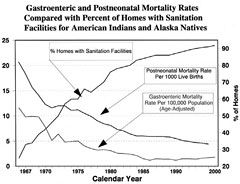Pacific Southwest, Region 9
Serving: Arizona, California, Hawaii, Nevada, Pacific Islands, 148 Tribes
Tribal Accomplishments, 2009


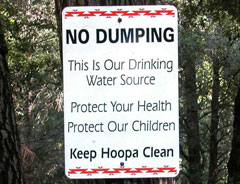
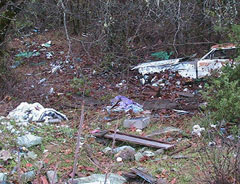

Nancy Vucinich.
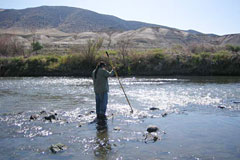
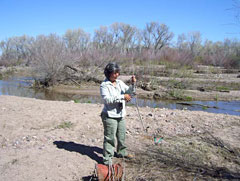
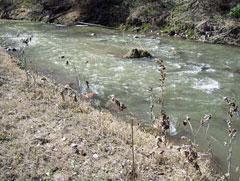
Clean & Safe Water
EPA and tribes have worked together to achieve clean and safe water by building water infrastructure projects, protecting underground sources of drinking water, and implementing water quality monitoring and restoration projects.
Building Water Infrastructure
In partnership with tribes and the Indian Health Service, EPA’s Clean Water and Drinking Water Tribal Set-Aside programs in the Pacific Southwest have provided $112 million for 450 projects, funding water infrastructure improvements for 65,000 tribal homes since 1987. The Clean Water Indian Set- Aside allocation tripled from 0.5% when the program was authorized in 1987 to 1.5% in 1991. The Region 9 Drinking Water Tribal Set-Aside program is one of the few EPA water programs developed in consultation with tribes. Together, these programs increase access to safe drinking water and basic sanitation, which improves public health and environmental protection.
The Tucson Indian Health Service (IHS) Office and Tohono O’odham Nation have worked together on many projects since the late 1980s to improve wastewater infrastructure for tribal members. One of the more recent successful projects was completed at San Lucy Village where a deteriorating sewage collection system, including 37 sewer manholes, were repaired. By using state of the art cost-saving techniques and manhole rehabilitation methods, including the Cured-In-Place Pipe Technique, manholes were repaired using a cement base coating to fill in damaged areas and then coated with a blue epoxy to protect the repairs. As a result of the project, 116 homes in the village now have improved sewage collection.
Provide Safe Drinking Water
In the 1970s, EPA’s tribal drinking water program began field inventories of all tribal drinking water systems. Region 9’s program became one of the first with first-hand knowledge of tribal systems in Indian Country. Over the past 25 years, many tribal drinking water accomplishments stand out as ‘firsts’ in the Pacific Southwest Region and in the entire U.S.
- The Navajo Nation became the first and only tribe to attain program delegation under the Safe Drinking Water Act Section 1413. Since 2000, the Nation has effectively implemented a comprehensive drinking water program to ensure that their 161 public water systems provide water that meets federal drinking water standards.
- In 1993, the first Tribal Operator Certification Program started up in Region 9 through a partnership with tribes, Indian Health Service, EPA and the Inter-Tribal Council of Arizona. The program includes reciprocity with state certification programs and is endorsed by the Association of Boards of Certification. Now, nearly two-thirds of tribal drinking water operators in Region 9 are certified.
- For over a decade, Region 9’s Tribal Circuit Rider program, implemented by the Rural Community Assistance Corporation, has extended EPA’s field presence in Indian Country by delivering hands-on technical assistance and training to tribal water operators.
- Since 1997, EPA Region 9 has modernized tribal drinking water data collection and management, allowing for sophisticated information exchange and improved data quality. Now automated monitoring schedules are easily produced, which helps tribes improve compliance.
- EPA Region 9 also holds a biennial tribal drinking water training conference which includes topics such as operator certification exam preparation, disinfection procedures, proper management of drinking water facilities, source water protection tools, utility management, current and future regulatory requirements, and emergency preparedness.
Protecting Underground Sources of Drinking Water
The 1996 amendments to the Safe Drinking Water Act recognized source water protection as an important aspect of providing safe drinking water, ensuring that water quality is protected from source to tap. The 1996 amendments also authorized the Tribal Source Water Assessment and Protection Program (SWAP) to help tribes identify and assess any possible threats or potential contamination to public drinking water supply sources, and to protect water from those threats. More than $4 million has been awarded to tribes to support source water assessment and protection efforts in over 60% of tribal public water systems in the Pacific Southwest.
Since 2002, Tribal SWAP funding has supported the Hoopa Valley Tribe’s source water assessments, which identified potential contaminant threats to the tribe’s drinking water supply. As a result, the tribe did outreach activities to educate the public about the threats and susceptibility of the tribe’s drinking water, cleaned up illegal dumps, and coordinated protection efforts with private and public entities.
Assessing Water Quality
In the late 1980s, tribes began receiving funds to monitor, assess, and analyze water quality trends under the Clean Water Act Section 106 – Water Pollution Control Program. The program helps tribes build institutional capacity to administer water quality programs and protect natural resources. Over a 20-year period, the Water Pollution Control Program has grown from five tribes eligible to receive funding in 1989 to 98 tribes in 2009.
One of the first tribes to initiate a Water Pollution Control Program was the Pyramid Lake Paiute Tribe in Nevada. The tribe has monitored and assessed the quality of numerous water bodies throughout their reservation including Pyramid Lake, the Truckee River, and various wetlands and springs. A long history of data collection has enabled tribal staff to observe water quality trends over time and to identify areas of concern. Pyramid Lake recently received authorization from EPA to administer their Water Quality Standards and Certification Programs.
Improving Water Quality
Using results from water quality monitoring and assessments conducted over the years, tribes have addressed water quality issues of concern under the Clean Water Act (CWA) Section 319 – Nonpoint Source Pollution Control Program. Tribes have used CWA Section 319 funds to develop and carry out polluted runoff control programs that address critical water quality concerns and achieve positive environmental results. The Nonpoint Source Program has grown from 11 tribes eligible to receive funding in 1997 to more than 77 tribes in 2009.
The San Carlos Apache Tribe in Arizona has been carrying out on-the-ground projects funded by the Nonpoint Source Program since 2000, addressing critical water quality problems throughout the reservation. The most recent restoration project, completed in 2009, involved revegetating the Six Mile Area of the San Carlos River using black willow branches to reduce sediment levels and improve water quality.
| Pacific Southwest NewsroomPacific Southwest Programs | Grants & FundingUS-Mexico Border | Media Center Careers | About EPA Region 9 (Pacific Southwest)A-Z Index |

